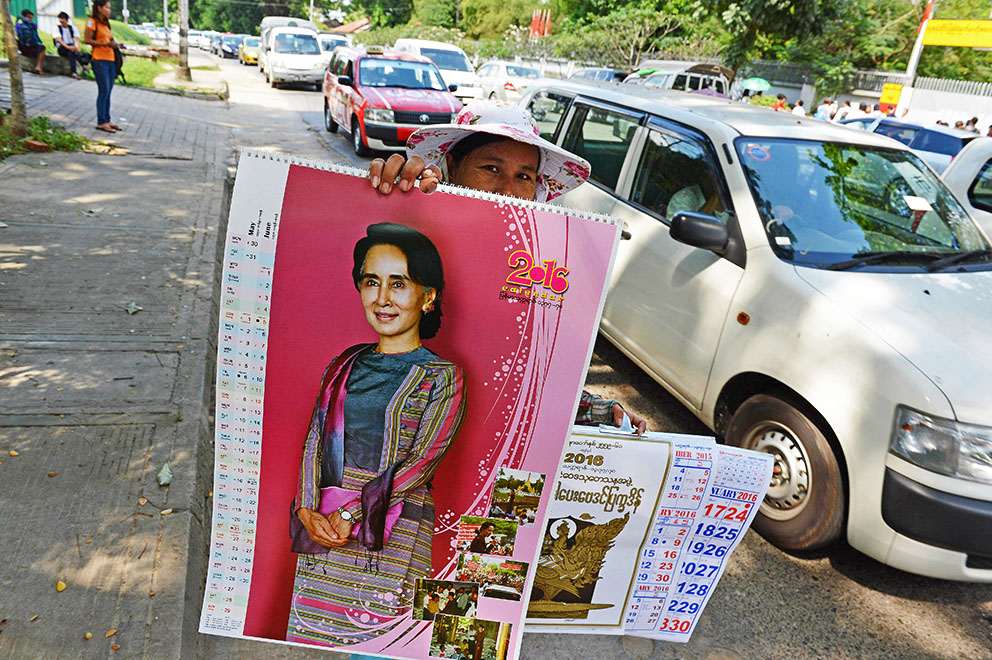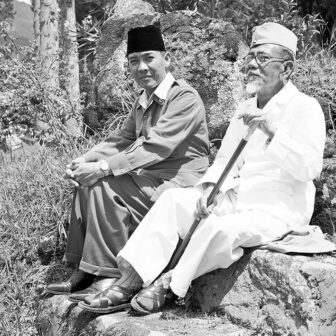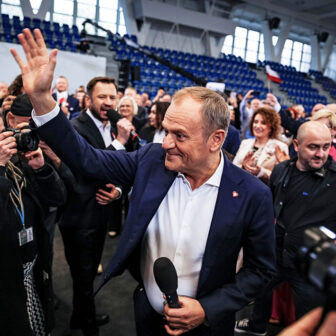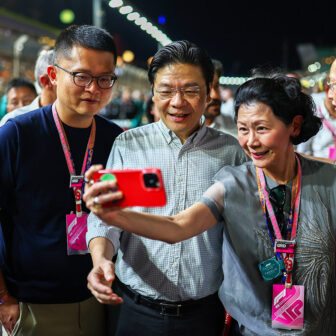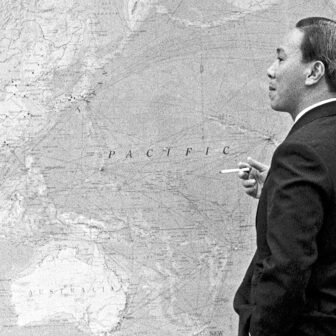The final tallies in Myanmar’s 8 November general election are still trickling in – ballots are even arriving by helicopter to speed up the process in more remote areas – but the result has been clear since the evening of the vote, when crowds began gathering on the streets of Yangon, Mandalay and other cities, cheering and waving red flags. Aung San Suu Kyi and her National League for Democracy have recorded a landslide win.
Largely on the back of the Nobel laureate’s personal popularity, the NLD was always expected to do well. But with the military holding 25 per cent of seats in all national and regional parliaments, attention had focused on whether the party could secure 67 per cent of seats, giving it a “supermajority” – more than 50 per cent even after military MPs are factored in. This would enable it to select and appoint the president without the need to negotiate with other political stakeholders.
The NLD has blown that target out of the water. With a handful of constituencies left to announce, it has already won more than 80 per cent of seats – a figure eerily similar to its win in 1990, a result the generals never honoured. The scale of the victory has been devastating for many of Myanmar’s ninety-two registered parties, not least the military-backed Union Solidarity and Development Party, or USDP, which campaigned on the record of President Thein Sein, the reformist president it put in place in 2011. The USDP parliamentary caucus has been wiped out, and almost all government ministers who contested have lost heavily.
Full voting results have not been announced; the Union Election Commission has so far given only the name and party of the winning candidate, and the number of votes they received. Yet unofficial figures from local electoral commission branches and the parties, which had members at each polling station to monitor the vote and count, reveal huge wins for the NLD. In Hlaing Tharyar, on the outskirts of Yangon, its candidates received more than five times the number of votes as their USDP rivals. Other races have been closer, yet the USDP has won just a handful of seats in areas dominated by the ethnic Bamar, its supposed conservative heartland. According to a (possibly apocryphal) report from northern Myanmar, one USDP candidate received just two votes at his local polling station – despite having six family members eligible to vote there.
In some cases the outcome has been simply embarrassing. In Naypyitaw, the capital the generals built from scratch barely a decade ago, the former defence minister, who resigned to contest the election, lost by 176 votes to a poet, Maung Tin Thit, standing for the NLD. To make matters worse, it’s the constituency of the former head of the military junta, Than Shwe, and his deputy, Maung Aye. In the end, the USDP won only one of ten national parliament seats in Naypyitaw, despite its being home to almost 100,000 civil servants and military personnel, as well as their families.
Given such strong results, why was the outcome ever in doubt? Democratic elections are so new to Myanmar that opinion polls and data on voting intentions are virtually non-existent. The few surveys conducted in recent years – by the International Republican Institute, Asia Foundation and Asian Barometer Survey – highlighted strong approval for the government and the president but also continued enthusiasm for Aung San Suu Kyi and the NLD. The results also showed a respect for hierarchy and tradition, and the strong influence of religious leaders. And 53 per cent of respondents in the Asian Barometer Survey listed the economy as their top priority, above issues such as governance and social services.
These factors were all thought to play in favour of the USDP. The party had the backing of conservative Buddhist leaders and the military, either explicitly or implicitly, and during the campaign its candidates emphasised the positive changes of the past five years. Yet, in the end, the election became a referendum on authoritarianism. Voters were unwilling to consider the past five years as distinct from everything that the military had done in the fifty-three years since it seized power from a democratically elected government and introduced a socialist autarky. The historical legitimacy of the NLD, the party that won in 1990 but was denied power, was certainly affirmed. But the antipathy towards the ruling military elite was palpable; one photograph widely shared on social media shows an invalid vote cast in Shan State, with eight candidates listed. Every box has been stamped except for the USDP. (In Myanmar’s first-past-the-post system, voters need only stamp one box.)
Despite the complexities of the issues identified as important to the election – religion, the economy and ethnic affiliation, for instance – the people voted for a simple idea: change. That’s not to say they were unconcerned about the NLD’s perceived support for Muslims, or questions over the party’s ability to govern. These fears, stoked by the government and the USDP, were simply trumped by the hope for a better future and belief in Aung San Suu Kyi to deliver. In that sense, it was a hugely positive result.
The NLD campaign was extremely effective, despite criticism from observers over its message to vote for the party and ignore the candidate. “Don’t worry about the candidates,” Aung San Suu Kyi said at her rallies. “If they’re bad, we’ll pull them into line.” High-profile individuals who may have been reluctant to toe the party line – or, rather, Aung San Suu Kyi’s line – had been blocked from running for the NLD. The country’s democracy icon then reinforced the message on a punishing national tour that even took her to remote ethnic minority areas, such as conflict-hit Kayah State, on the border with Thailand. Thousands turned out at each stop. No one can agree on how many attended her last rally in Yangon, on 1 November, but the sea of red appeared close to 100,000.
Anecdotal reports suggest that some voters – perhaps a significant number – may have decided to support the NLD only at the last minute, when they were swept up in the euphoria of the moment. With no exit polling, it is impossible to know. Certainly, the result surprised the USDP, which had expected the government’s construction of roads, bridges and schools, and its offering of low-interest loans, to resonate with hip-pocket voters. The Ayeyarwady delta, the country’s rice bowl and home to Thein Sein and many other senior government officials, was thought to be one such area. As it turned out, many said they would vote USDP when the candidates visited their villages but once they got in the booth they ignored the party’s lion emblem and stamped beside the NLD’s logo, a golden peacock on a red flag. In part, they had humoured the USDP candidates out of Myanmar politeness.
This tallies with some of the findings of the Asian Barometer Survey, which comprised more than 1600 interviews conducted between May 2014 and March 2015. The response rate – those willing to undertake the survey – was 87 per cent, the highest in East Asia. But one legacy of decades of military rule is that many, particularly in rural areas, are still reluctant to discuss party politics: around half of the respondents refused to answer questions about voting intentions. Many voters obviously preferred to keep their cards close to their chest, or were still unsure how they would vote. But when asked general questions for the survey, they tended to answer. And just 4 per cent – the lowest of any Asian nation – expressed support for authoritarian government.
The NLD has also done far better in ethnic minority areas than even the most optimistic observers anticipated. Administratively, Myanmar is divided into seven regions, dominated by the ethnic Bamar majority, and seven states, one for each of the seven main ethnic groups: Kachin, Kayah, Kayin, Chin, Mon, Rakhine and Shan. Only in the latter two did the NLD not win the majority of seats.
Prior to the vote, ethnic leaders had expressed concern about the impact of vote-splitting among the large number of ethnic parties. Under Myanmar’s first-past-the-post voting system, they would take votes away from each other and possibly enable the USDP or NLD to win despite local sentiment. While this was indeed a factor in some areas, preliminary figures suggest the NLD would have won in many constituencies even if there had been just a single ethnic minority party. The full voting results will no doubt give a clearer picture.
With preliminary results mostly in, the question is: what now for Myanmar? The scale of the NLD’s win and the speed with which it became evident has quickly shifted attention to the transition to a new government. On 10 November, Aung San Suu Kyi wrote to president Thein Sein, senior general Min Aung Hlaing and parliamentary speaker Shwe Mann proposing talks aimed at “national reconciliation” this coming week. They quickly accepted her offer, with the president and military commander-in-chief also congratulating her on the NLD’s victory.
These talks are important for a number of reasons. Myanmar’s constitution sets out a novel process for selecting the president, together with an unusually long transition period. Newly elected MPs will not meet until late January. One of their first orders of business will be to choose the president from among three candidates. Elected representatives in the upper and lower houses will nominate one each (the NLD, thanks to its overwhelming victory, will get to choose both). A third will be chosen by the commander-in-chief through the military’s parliamentary bloc. All representatives, elected and military, will then gather to choose the president from among these three candidates, with the two losers becoming vice-presidents. The NLD-backed president will then appoint a cabinet, but will not assume office until the end of March – four-and-a-half months from now.
In the meantime, the current parliament – whose members were mostly wiped out in the election – will meet on 16 November. Its agenda has been kept largely under wraps. Aung San Suu Kyi has instructed as many as possible of her MPs-elect to get to the capital to observe the session and learn about the parliamentary process.
Myanmar’s peace process is also moving forward, following the signing of a nationwide ceasefire accord on 15 October after two years of negotiations. The agreement was nationwide in name only – eight groups signed on but around another dozen, mostly those strung out along the border with China, refused. Their decision was driven in part by a desire not to give the government and USDP a boost in its re-election campaign. Political negotiations with the eight signatories are scheduled to start by 15 January, with a framework for political talks to be agreed a month before they begin. At the same time, Myanmar’s military is engaged in heavy fighting with one of the non-signatories, the Shan State Army–North, exacerbating tensions further.
But the question of the presidency is central. As many have already noted, the constitution bars Aung San Suu Kyi from the position because her sons hold foreign passports. In June and July of this year, the military used its parliamentary veto to block sweeping changes to the constitution proposed by parliament. An amendment to the “Aung San Suu Kyi clause” – section 59(f) – was not even put to a vote. The military has made clear that the constitution is not set in stone, but section 59(f) is one of several red lines it will not cross.
Aung San Suu Kyi has responded in recent weeks by pledging to install a puppet leader, and declared she would be “above the president” – dangerous rhetoric, and a position that some of her opponents have already declared unconstitutional. It remains unclear whom she will choose; most likely, she has not yet made a decision. There would be no sense in committing so early, and there are no obvious candidates. Managing such an unusual arrangement, with a president granted wide-ranging powers by the constitution essentially subservient to an elected MP, will require deft footwork from the NLD leader.
In such a potentially volatile environment, negotiations as to how to manage the next four months are essential. The speed with which Aung San Suu Kyi’s offer for talks was accepted is heartening. It is important that all four leaders who gather in Naypyitaw this week maintain a constructive relationship, particularly Aung San Suu Kyi and Min Aung Hlaing, who will retain their status beyond March 2016.
Despite the NLD’s election win, the military still holds many keys to the kingdom. These are enshrined in the constitution that it painstakingly drafted over the course of fifteen years and had approved in 2008 at a sham referendum. The military’s 25 per cent of seats in parliament gives it the power to block constitutional reform, and it also controls three key government ministries. The ability to choose one vice-president also gives it a majority on the powerful National Defence and Security Council, which effectively sits above cabinet.
A poor relationship with the military will hamper Aung San Suu Kyi’s ability to govern the country. Already, the scale of the challenge she and her party face is daunting. Expectations are sky-high, with “an almost religious belief that instantly life will be better,” as one journalist put it to me. With their parliamentary presence largely gone, ethnic minority political leaders – not to mention ethnic armed groups – will no doubt fear a continuation of the strict centralism that characterised military rule and eased only slightly under Thein Sein.
In recent years the government’s reforms have been slowed by the low capacity of the civil service, with a small number of qualified people bearing an impossibly heavy burden. This challenge will not disappear overnight. There is also simply not yet enough money in government coffers to do much that the NLD, and the people, would like, particularly in health and education. Reducing corruption and convincing businesses, in particular, to pay more tax will be absolutely essential, yet far from easy.
But there is much to be optimistic about. The graciousness with which the USDP conceded defeat and congratulated the NLD on its victory – effectively drawing a curtain on five decades of military-backed rule – has surprised many. While the military strongly supported the USDP, constitutional safeguards mean there is little incentive to stage a coup. It will also be confident that, in five years’ time, some voters will defect back to conservative or ethnic political forces. But the NLD should be carried along on a tide of public goodwill for some time yet, including in the civil service. It will also begin in a much stronger position than Thein Sein’s five years ago, thanks to his government’s reforms, particularly on the economic front.
Finally, there was one other winner on 8 November: the Union Election Commission. For years, the distrust between the opposition and the commission has been palpable, largely because its outspoken chair, Tin Aye, is a former general and USDP member. Even shortly after the vote, senior NLD officials were warning that the slow release of official results might reflect commission efforts to amend the result. There were, of course, some isolated problems on election day, particularly with eligible voters not being on the electoral roll, and the commission’s public messaging could certainly have been better. But the many doubts expressed about the commission’s impartiality and its ability to manage the election have largely been proven wrong. That such a high-stakes vote could be held with little violence or attempts to manipulate the outcome is an incredible feat.
From a position of mutual distrust, the commission was able to draft enduring codes of conduct for political parties and electoral observers, together with dramatically improved voter rolls. In addition to voting, thousands of people also gained experience of the political process, acting as formal or informal election observers in polling stations during the day. The election, therefore, has bequeathed Myanmar an incipient trust in its electoral system and those who run it. This will be essential for future elections.
The people of Myanmar have spoken, and done so decisively. Now all eyes are on Aung San Suu Kyi, president Thein Sein and senior general Min Aung Hlaing and their moves this week. •
